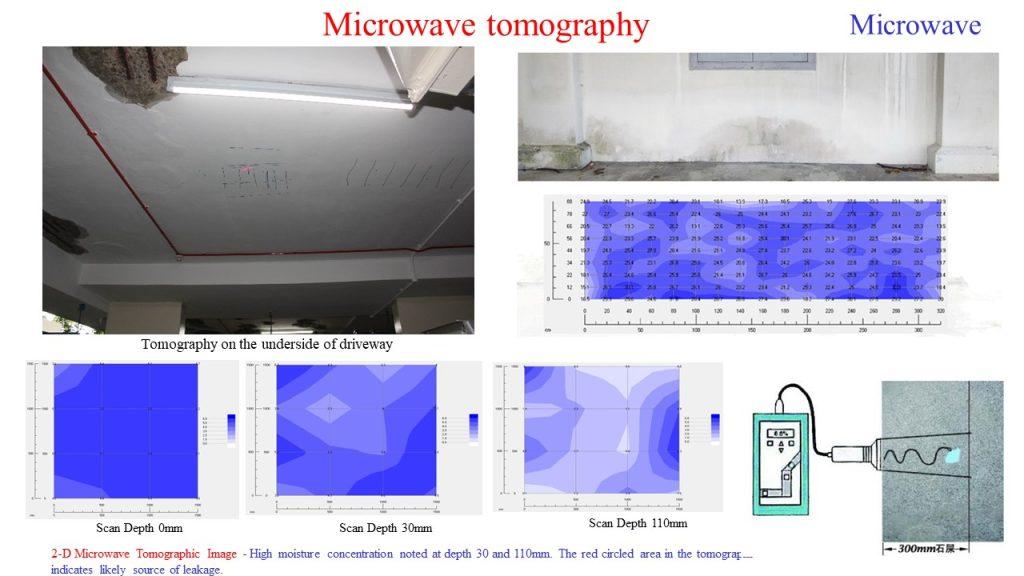Microwave
Microwave tomography is a technique to measure the moisture of various materials based on the relatively high dielectric constant of “water” in comparison to the dielectric properties of the material. An electrical field (microwave) is applied to the material, and the microwave induces oscillations of bipolar molecules (i.e., water). Water molecules will reflect and absorb an electrical field during oscillations. A higher electrical field reflected indicates higher water content.
Take sand as an example of a material. Common sand (silicon dioxide) produces a dielectric constant of 4.2 compared to the dielectric constant of water of 80.4. This large variation of the dielectric constant between water and sand makes sand an insignificant contributor to the combined dielectric constant, which is measured by monitoring the change in the microwave signal. Both the velocity of the microwave signal (or phase shift) and the ultimate signal strength (or attenuation) would be affected by the change in the dielectric constant of the analysed material.




